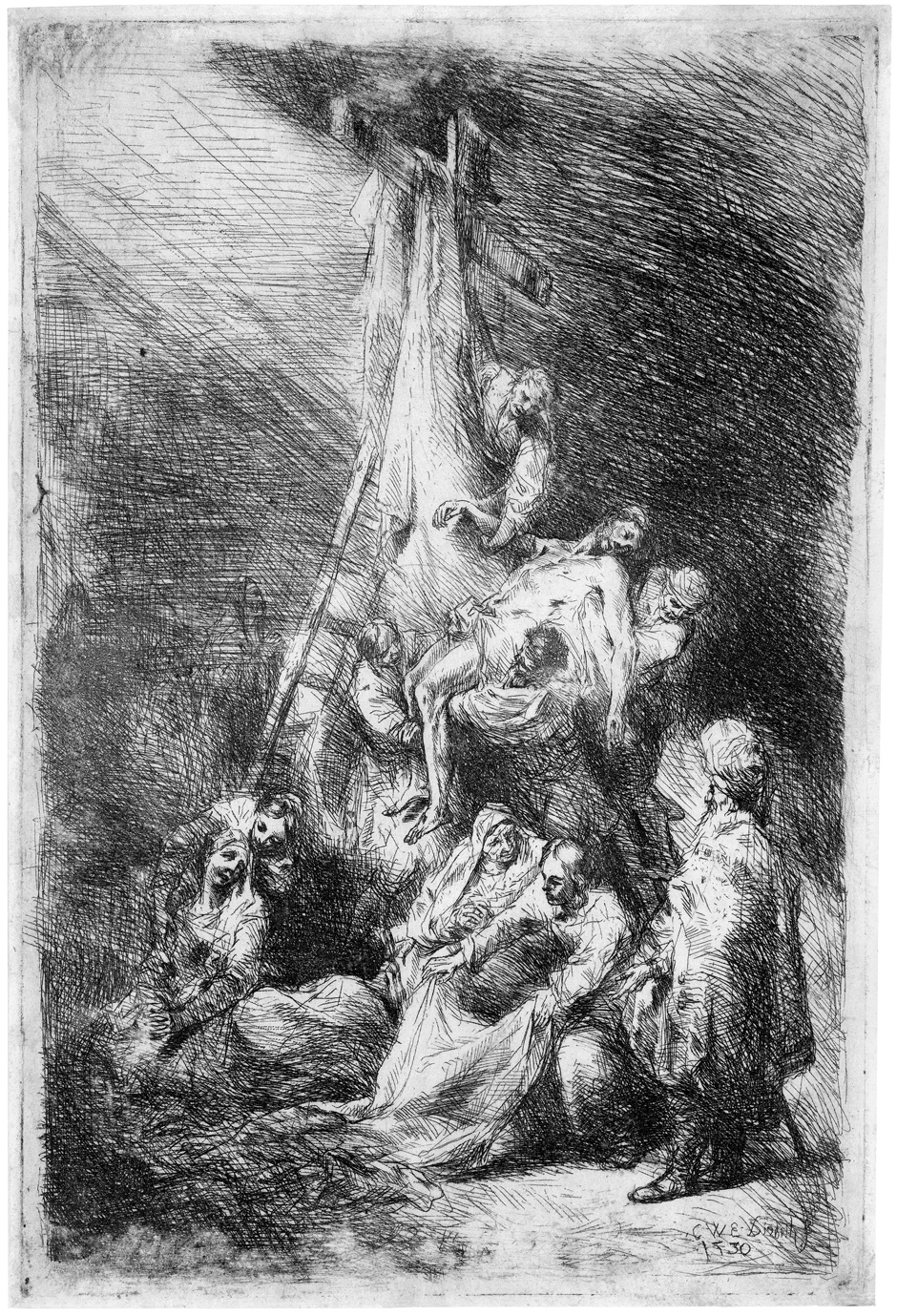Loading the page ...
Christian Wilhelm Ernst Dietrich
(called Dietricy, 1712 Weimar – 1774 Dresden)
Descent from the Cross. Etching. 27.5 x 18.1 cm. 1730. Linck 23 II (of III).
Here we see Dietrich at the pinnacle of his art, even though the artist was just eighteen years of age when he produced this brilliant Descent from the Cross. The work is a perfect example of the successful adaptation of a pictorial tradition, the composition being directly attributable to Rembrandt’s large etching The Descent from the Cross, which Dietrich’s predecessor produced just under a century earlier in 1633. While the arrangement of the towering cross with its diagonal crossbeam and the attitudes of the individual protagonists adhere very closely to the famous prototype, the young artist has nonetheless made a number of changes. For dramatic effect he has added on the left the grieving, distraught Mother of God, over whom Mary Magdalene bends with a consoling gesture. In contrast to the original version Dietrich has dispensed with the Old Testament architectural scenery in the background; instead the gruesome events are played out against an eerie, gloomy background in which the outlines of the individual figures are vaguely discernible.
Rembrandt’s etching is an early work of the 1630s. The drawing style is correspondingly precise and detailed and reveals the artist’s characteristic fondness for anecdotal minutiae. In contrast to Rembrandt, Dietrich’s version is far more dramatic and full of even greater pathos. His etching style is remarkably untrammelled, spirited, impetuous even, and almost experimental in character. In this work Dietrich attempted to instil painterly values rather than focussing on linear discipline and genre-like accuracy of detail. Blazing light illuminates the scene, and the stark chiaroscuro contrasts have a compelling, captivating effect. Only in a few other works did Dietrich demonstrate a comparable degree of artistic freedom and mastery of the medium.
According to Linck the etching is extremely rare. The plate was abraded after a few impressions. A superb, contrasting and rich impression with thread margins. Minor ageing, otherwise in impeccable condition.
Contact us for further information